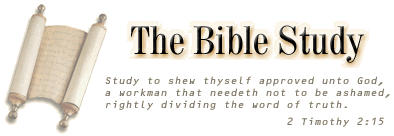Your Bible and Johann Gutenberg
Of the notable Jews who have influenced the lives of millions of people of all nations, the name of Johann Gutenberg should be put near the top of the list.
He was born of a wealthy Jewish family in 1397, at Mainz, in Germany. He became a goldsmith and maker of seals by profession at first, but in 1444 he changed direction to set up the very first printing press in Europe. His skill in making jewelery and moulds for casting intricate shapes in gold was the background to his decision to use this technique for making printer's type that could be used over and over again. He cut out the shape of each letter, in reverse, in metal, then imprinted this shape on a soft copper mould and finally cast a quantity of the letters from this mould. His skill with metals led him to make the ideal alloy for casting the type, a formula that was still in use centuries later. The alloy consisted of eighty-three per cent lead, five per cent tin and twelve per cent antimony.
Until Gutenberg developed the art of letterpress printing in Europe, every copy of every document had to be carefully written out letter by letter by the hand of a scribe. Whether Gutenberg knew of similar developments in China and Korea is unknown. But the Chinese had hit on the idea of inscribing on a flat stone, then inking it and pressing paper over it; and the Koreans had gone a step further by inventing movable type that could be used again and again.
Gutenberg's development of printing came at a time when Europe was becoming literate, and the expanding universities were creating a surge of demand for books.
One of the first printing projects undertaken by Gutenberg was to print the Bible. The type that he designed for this purpose was made to look like very carefully handwritten letters; but, by mass production, he could reduce the price from that using a scribe. For example, a handwritten copy of the Bible could cost the wages of a scribe for a full year, whereas a printed copy could be produced for a few pounds.
From this very small beginning, printing presses were soon being built all over Europe, and typefaces were soon being cast in many different styles. Gutenberg's method of setting up a page of type, letter by letter, remained unchanged until comparatively recent times. Thus it was that one skilled Jewish goldsmith began the flood of printed matter that flows so freely today, including the mass production of Bibles in many languages.
By John V. Collyer
